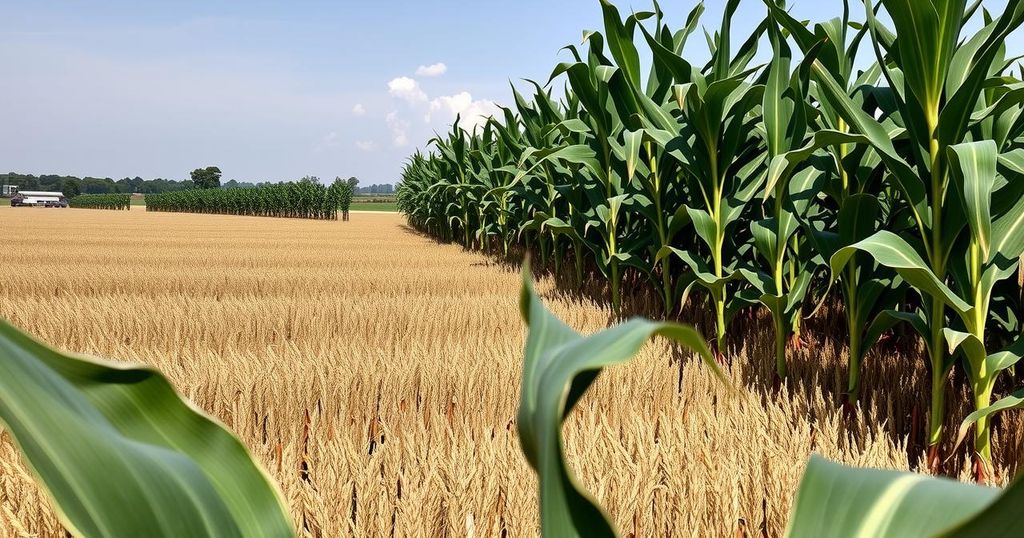Dry Weather in Argentina Boosts Soybean and Corn Prices
Soybean and corn futures have risen on the CBOT due to concerns over crop yields in Argentina, driven by ongoing dry weather. Soybeans increased by 1.29% to $10.04 per bushel, and corn rose by 0.78% to $4.54 per bushel. Wheat prices also edged up, while Kazakhstan has ramped up its grain exports significantly, highlighting market shifts due to climate-related factors.
In recent trading, soybean and corn futures on the Chicago Board of Trade (CBOT) experienced a notable upturn, influenced primarily by ongoing dry weather conditions in Argentina, which raises concerns over crop yields for the upcoming 2024/25 season. Specifically, soybean prices rose by 1.29% to $10.04 per bushel, while corn increased by 0.78%, reaching $4.54 per bushel. These price hikes followed a period of favorable rainfall but were overshadowed by dry spells that could impact agricultural output significantly. Additionally, wheat futures also saw an increase of 0.8%, settling at $5.33 per bushel, attributed to global supply constraints caused by adverse weather conditions. Compounding the situation, Kazakhstan reported a substantial rise in grain exports, totaling 3.7 million metric tons from September to December, marking a 54% increase compared to the previous year. In contrast, French farmers have initiated protests against what they deem unfair competition and restrictive governmental policies, highlighting tensions within the agricultural sector.
The current fluctuations in the soybean and corn markets are primarily a result of environmental factors affecting crop production in Argentina, a key player in global agriculture. The dry weather patterns emphasize the crucial intersection between climate conditions and agricultural output, which not only impacts local economies but also has significant ramifications for global markets. As a response to Argentina’s production challenges, countries like Kazakhstan are capitalizing on export opportunities, underscoring shifts in the global agricultural landscape driven by climate variability. Furthermore, domestic unrest, as seen in the protests by French farmers, illustrates the broader implications of international trade dynamics and their impact on local agricultural policies.
The developments in the soybean and corn futures market reflect the critical impact of climatic conditions on agriculture. Argentina’s dry weather poses threats to crop yields, leading to increased prices and revealing vulnerabilities in the global supply chain. At the same time, Kazakhstan’s proactive stance in grain exports signals a shift in market dynamics as countries adapt to these challenges. The discontent among French farmers underscores the urgency for sustainable agricultural practices amid evolving international trade conditions.
Original Source: finimize.com




Post Comment